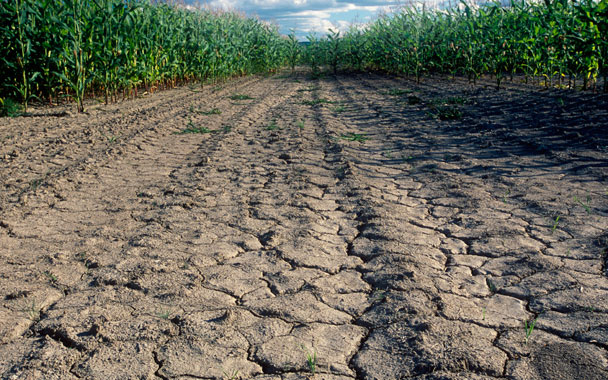Hot Stuff
Giant invasive weeds that can withstand massive doses of herbicide, swarms of alien insects, cows that stop giving milk…
I’m not talking sci-fi here. Addressing the Monterey Bay Aquarium’s Sustainable Foods Institute last week, David W. Wolfe, a professor of plant ecology at Cornell University, painted the most vivid picture I’ve encountered of what agriculture will be like if the current rate of global warming continues.
Wolfe first gave some concrete examples of how change is already occurring. The National Arbor Day Foundation’s Plant Hardiness Zone Map, relied upon by farmers, horticulturalists, and gardeners to determine the length of growing seasons, has changed dramatically over the last 15 years, with vast areas of the country becoming one or even two zones warmer than they were in 1990, as these maps make startlingly clear.
And you don’t need maps or detailed computer modeling to see that we are in the midst of sweeping climate change. Just step outside and look at the flowers. According to Wolfe, researchers have found that apples are blooming eight days, grapes six days, and lilacs four days earlier than they did historically.
And if the present trends continue? Wolfe pointed out that the country will get 10.5 to 14 degrees warmer by the end of this century, unless we change our greenhouse-gas-emitting ways. To provide an idea of the difference 10 degrees can make, he pointed out that we have warmed up less than that amount over the past 10,000 years—which goes back to a time when much of the country was under glaciers.
Other changes we can expect:
· Kudzu, a fast-growing vine that engulfs trees, utility poles, and abandoned cars and buildings in the South, will move into the Northeast.
· Noxious weeds thrive on higher levels of carbon dioxide and become resistant to herbicide. In one experiment on Canadian thistles, it took three times as much herbicide to control those in a carbon-dioxide-rich environment than those in today’s environment.
· Due to heat stress, cattle will give less milk.
· California will lose its cherry crop due to heat. The cotton pink bollworm, a serious pest now confined to southern reaches of the state, will move north, infesting the entire Central Valley. California’s fine wines will decline in quality.
Facing issues of global magnitude, it’s hard to see what we, as food consumers, can do. But Wolfe had some suggestions:
· Buy local
· Grow your own
· Support farmers who use sustainable practices
· Eat less meat and more fruits and vegetables
· Vote!
And all you non-believers in global warming, take note: Huge agricultural companies at the forefront of genetic engineering, including Monsanto, BASF, Syngenta—the same folks who brought us Roundup Ready crops and the herbicides to go with them—are gobbling up patents on hundreds of gene-altered “climate-ready” crops that will withstand drought, heat, and other effects of global warming.
You can say what you like about Monsanto, but if its current profits are any indication, when it comes to future trends, the company’s executives know a sure bet when they see one.


